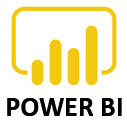
Power BI is a collection of software services, apps, and connectors that work together to turn your unrelated sources of data into coherent, visually immersive, and interactive insights. Whether your data is a simple Excel spreadsheet, or a collection of cloud-based and on-premises hybrid data warehouses, Power BI lets you easily connect to your data sources, visualize (or discover) what’s important, and share that with anyone or everyone you want.
Power BI can be simple and fast – capable of creating quick insights from an Excel spreadsheet or a local database. But Power BI is also robust and enterprise-grade, ready for extensive modeling and real-time analytics, as well as custom development. So it can be your personal report and visualization tool, and can also serve as the analytics and decision engine behind group projects, divisions, or entire corporations.
The course will allow learners to
1.Introduction to business intelligence
2.Introduction to data analysis
3.Introduction to data visualization
4.Overview of self-service BI
5.Considerations of self-service BI
6.Microsoft tools for self-service BI
Lab: Exploring an enterprise BI solution After completing this module, you will be able to:
• Describe key concepts in business intelligence
• Describe key concepts in data analysis
• Describe key concepts in data visualization
• Describe the rationale for self-service BI
• Describe considerations for self-service BI
• Describe how Microsoft products can be used to implement a self-service BI solution
1.Power BI
2.The Power BI service
3.Power BI mobile apps
Lab: Cresting a Power BI dashboard after completing this module, you will be able to:
• Describe Power BI
• Describe the Power BI Service
• Implement Tenant Management
• Describe Power BI mobile apps
• Create a simple dashboard
1.Using Excel as a Power BI data source
2.Using databases as a Power BI data source
3.The Power BI service
Lab: Import data into Power BI After completing this module, you will be able to:
• Use Excel as a Power BI data source
• Use databases as a Power BI data source and describe the R language
• Configure the Power BI Service
1.Power BI desktop queries
2.Shaping data
3.Combining data
Lab: Shaping and combining data After completing this module, you will be able to:
• Create Power BI Desktop queries
• Shape data
• Combine data Module
1.Relationships
2.DAX queries
3.Calculations and measures
Lab: Modelling data After completing this module, you will be able to:
• Configure the Power BI Service
• Create Relationships
• Write simple DAX queries
• Create calculations and measures
1.Creating Power BI reports
2.Managing a Power BI solution
Lab : Creating a Power BI report After completing this module, you will be able to:
• Use Power BI Desktop to create interactive data visualizations
• Describe the management of a Power BI solution